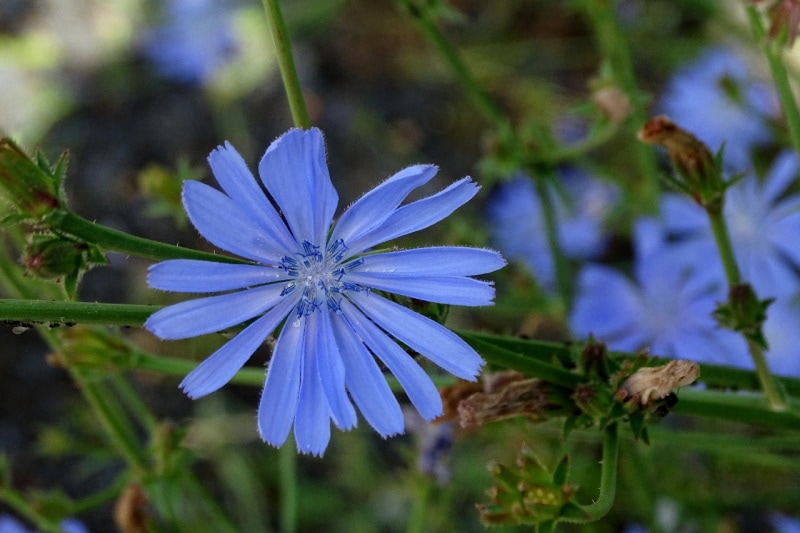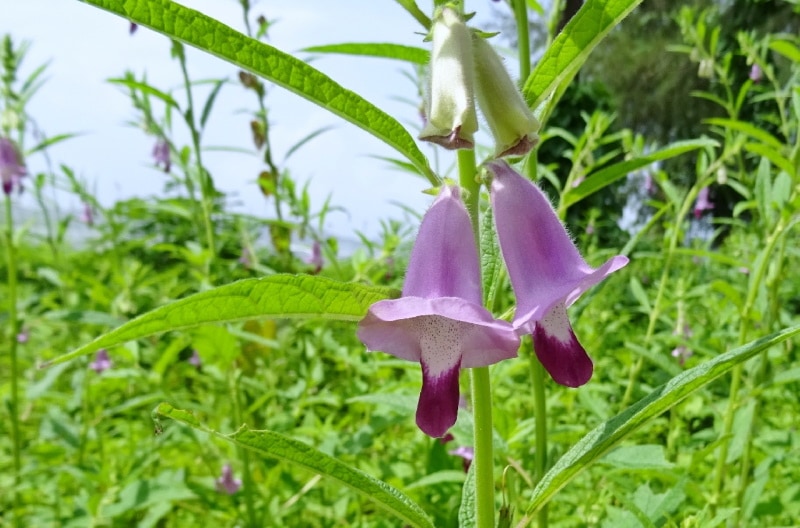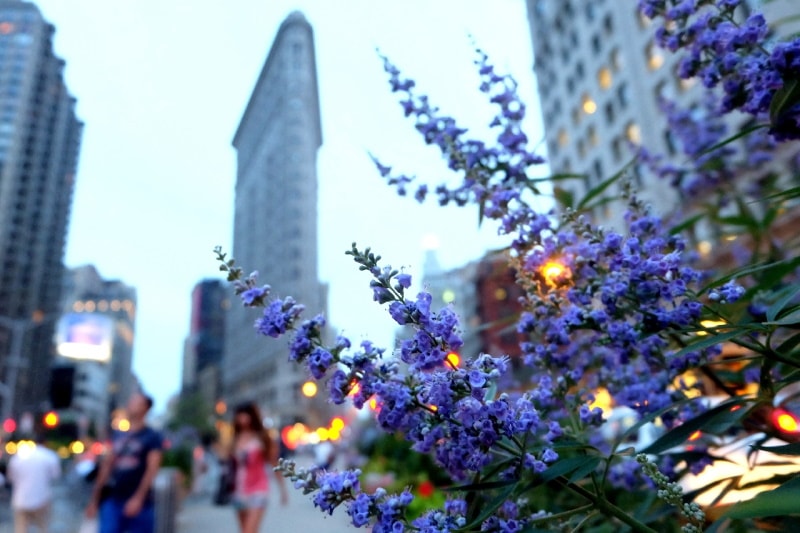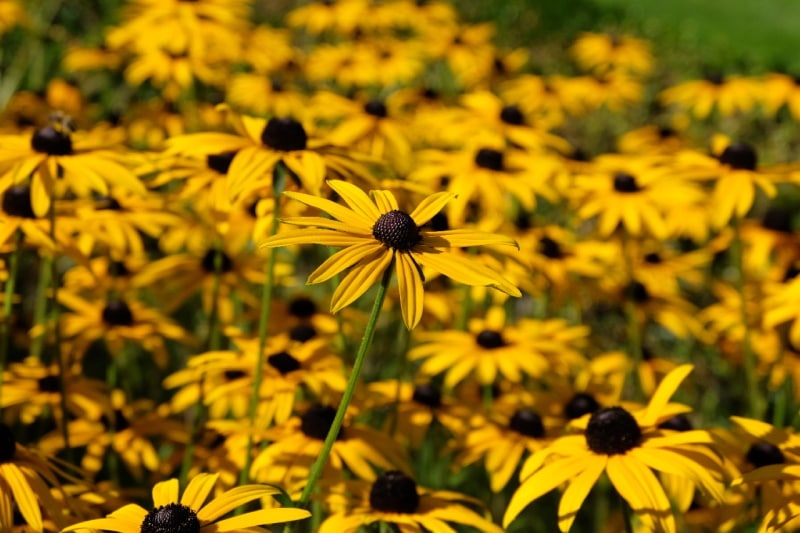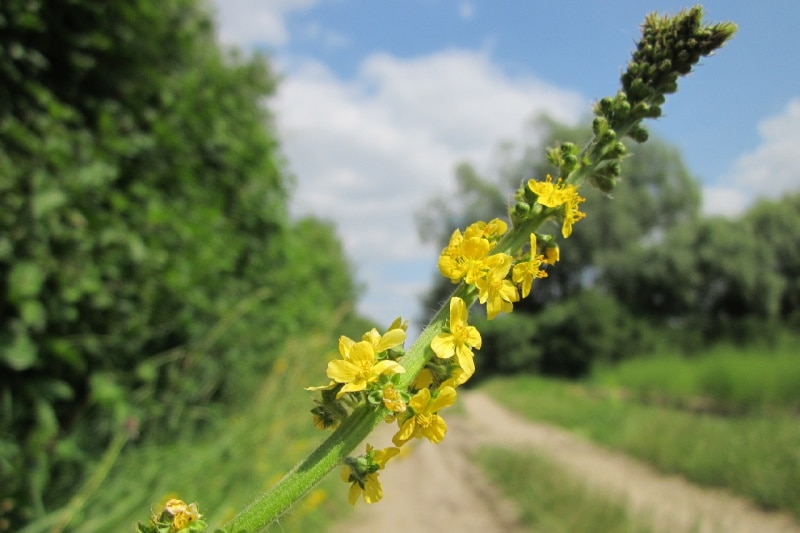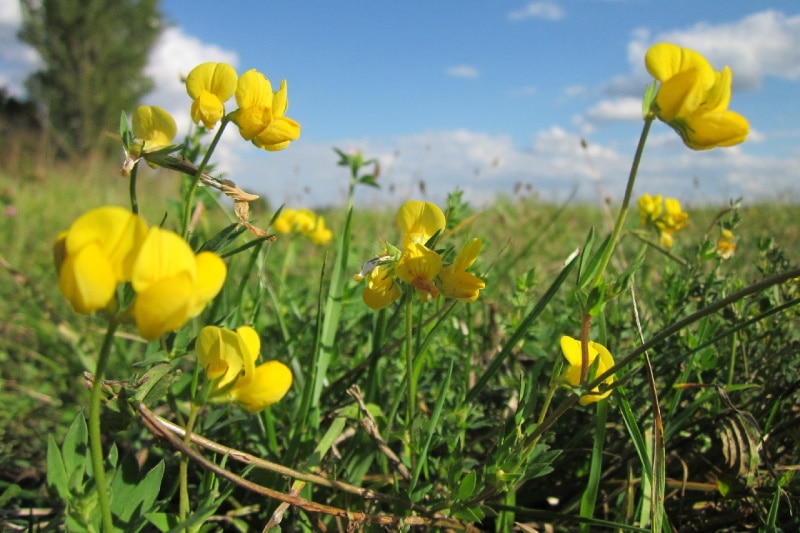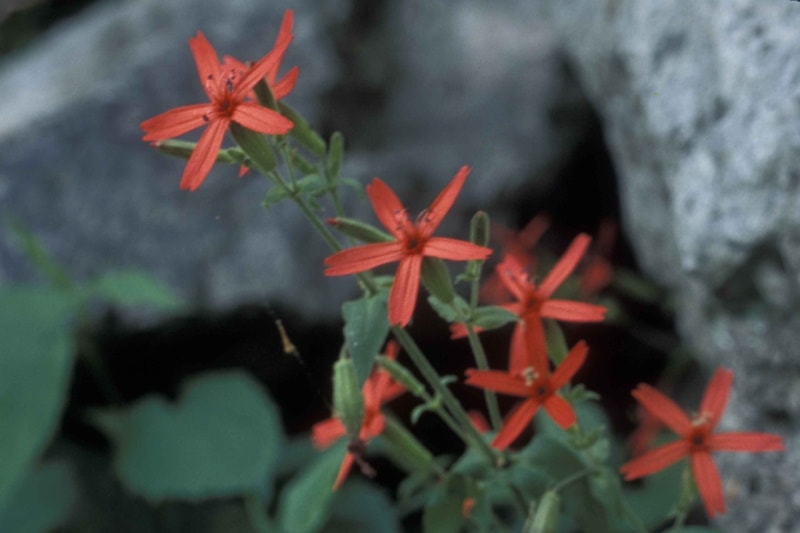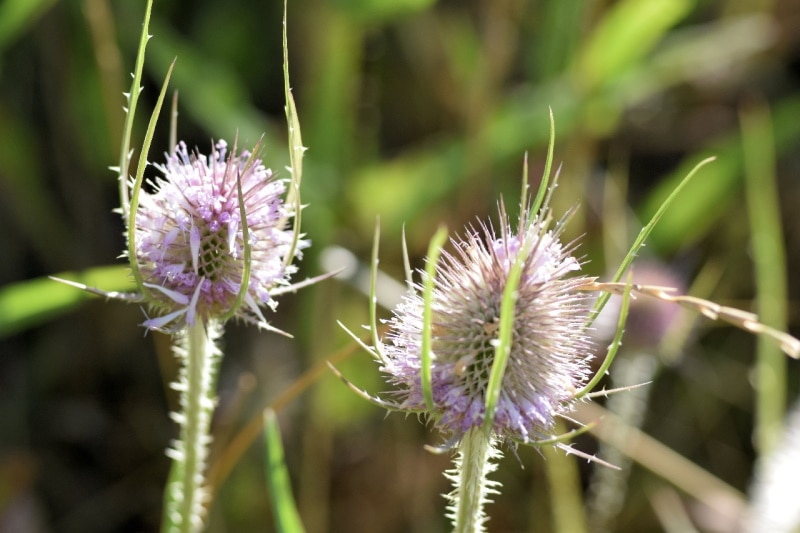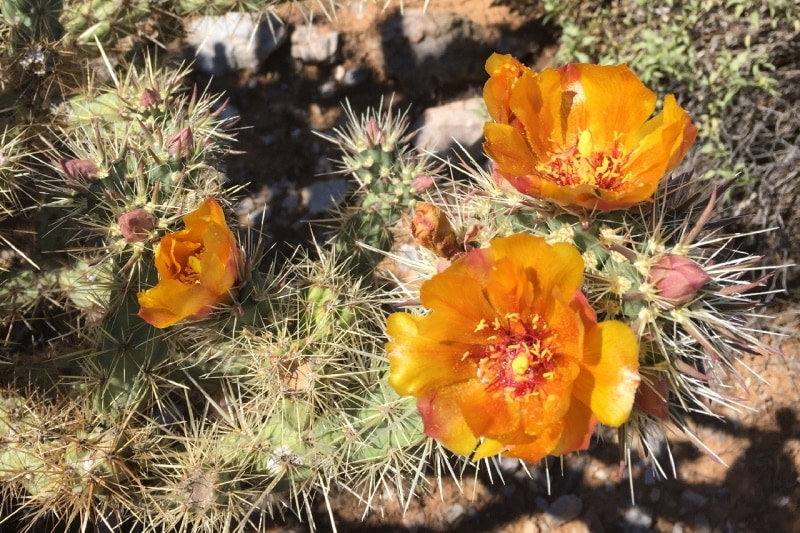18 Wildflowers That Grow in Tennessee: Identification Guide (With Pictures)
-
Pete Ortiz
- Last updated:
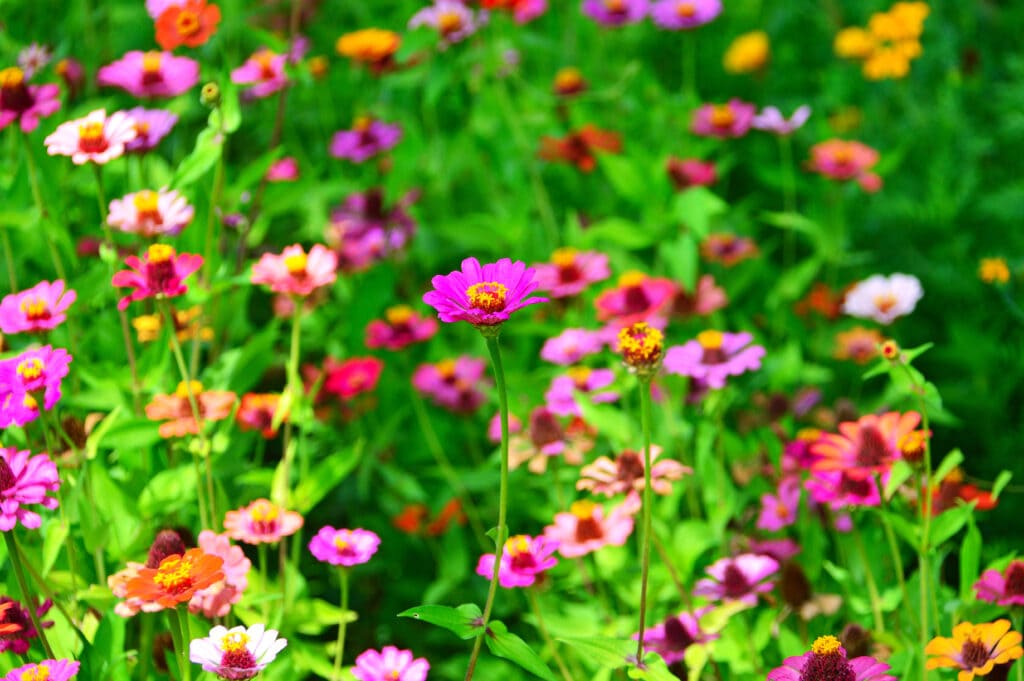
With thousands of wildflower species in Tennessee, we couldn’t possibly highlight them all for you here. But that also meant there was no shortage of options when we picked out some of our favorites!
We’ve highlighted 18 different wildflowers you can find throughout the state. Whether you’re visiting or you live there, these are some wildflowers you’ll want to try and spot while you’re there.
The 18 Wildflowers That Grow in Tennessee
1. Chicory
| Scientific Name: | Cichorium intybus |
| USDA Hardiness Zone: | 3 – 10 |
| Average Mature Size: | 3 – 5 feet |
Chicory is technically an invasive species since it originally came from Europe and Asia, but today you can find it throughout Tennessee. Chicory typically has blue flowers, but it is possible to spot some with white or pink flowers instead.
2. Puttyroot Orchid

| Scientific Name: | Aplectrum hyemale |
| USDA Hardiness Zone: | 3 – 8 |
| Average Mature Size: | 20 inches |
The Puttyroot orchid, often called the Adam and Eve plant, is a wildflower you can often find in the Appalachian Mountains in Tennessee. But while it’s most commonly found in The Appalachian Mountains, you can also find it at lower elevations in the state.
3. Calico Beardtongue
| Scientific Name: | Penstemon calycosus |
| USDA Hardiness Zone: | 5 – 8 |
| Average Mature Size: | 2 – 3 feet |
Calico Beardtongue is yet another tall wildflower you can find in Tennessee. They can grow up to 3 feet off the ground, and they typically have pink and purple flowers that make them a joy to spot.
4. Blue Vervain
| Scientific Name: | Verbena hastata |
| USDA Hardiness Zone: | 3 – 8 |
| Average Mature Size: | 2 – 4 feet |
Blue Vervain grows up to 4 feet high and has small purple and blue flowers that grow out of the stems. Many times, people will refer to blue vervain as swamp verbena, simpler’s joy, or American vervain.
5. Green Adder’s Mouth

| Scientific Name: | Malaxis unifolia |
| USDA Hardiness Zone: | 3 – 10 |
| Average Mature Size: | 20 inches |
Green Adder’s Mouth might not be the most aesthetically pleasing wildflower in Tennessee, but the state doesn’t have a shortage of them. The plant typically has large leaves near the base, and the flower extends out of that leaf. Sometimes, the plant can reach up to 20 inches off the ground, but it has a very small spread.
6. Giant Coneflower
| Scientific Name: | Rudbeckia maxima |
| USDA Hardiness Zone: | 5 – 9 |
| Average Mature Size: |
5 – 7 feet |
Few wildflowers can grow higher than the average human, but the Giant Coneflower is one of them. These plants can grow up to 7 feet off the ground, and each stem produces only a single yellow flower. The petals usually point downward, and the Giant Coneflower will grow in bunches.
7. Common Blue Violet
| Scientific Name: | Viola sororia |
| USDA Hardiness Zone: | 3 – 10 |
| Average Mature Size: |
4 inches |
“Common” is right in the name of the Common Blue Violet, and you can find them all over the place in Tennessee. Unlike many of the wildflowers on our list that reach far into the sky, the common blue violet usually only reaches about 4 inches off the ground. And while they might be common wildflowers, their bright purple petals make them extremely beautiful.
8. Tall Hairy Agrimony
| Scientific Name: | Agrimonia gryposepala |
| USDA Hardiness Zone: | 3 – 9 |
| Average Mature Size: |
5 feet |
Technically a part of the rose family, the Tall Hair Agrimony doesn’t bear much resemblance. They grow on long stalks that can reach up to 5 feet high, and they have tons of small yellow flowers throughout. They typically bloom between June and September.
9. Clustered Mountain Mint

| Scientific Name: | Pycnanthemum muticum |
| USDA Hardiness Zone: | 4 – 8 |
| Average Mature Size: |
1 – 3 feet |
Clustered Mountain Mint has a strong mint smell, and it works great as an insect repellant. They also do a great job of attracting butterflies, making them a favorite addition to many backyard gardens.
10. Lesser Periwinkle
| Scientific Name: | Vinca minor |
| USDA Hardiness Zone: | 4 – 8 |
| Average Mature Size: |
3 – 6 inches |
Common Periwinkle often goes by the name dwarf periwinkle, and it’s a small wildflower you can find throughout Tennessee. The tallest varieties sit just 6 inches off the ground, bringing blue or purple flowers.
11. Yellow Trefoil
| Scientific Name: | Medicago lupulina |
| USDA Hardiness Zone: | 3 – 9 |
| Average Mature Size: |
2 – 3 feet |
Many people call it Yellow Trefoil, or Black Medick, but no matter what you call it, it’s a type of clover. They spread like crazy, and they bloom with small yellow flowers. They’re extremely invasive, and if you have some in your garden, it’s likely to try and take over everything.
12. Fire Pink
| Scientific Name: | Silene virginica |
| USDA Hardiness Zone: | 4 – 8 |
| Average Mature Size: |
1 – 2 feet |
Fire pink doesn’t bloom for long, but with bright red flowers, it’s an interesting-looking wildflower when it does. The flowers themselves consist of five petals that form a star. They have a limited temperature tolerance, but if they can survive the temperatures, they don’t need much space to thrive.
13. Teasel
| Scientific Name: | Dipsacus |
| USDA Hardiness Zone: | 3 – 8 |
| Average Mature Size: |
2 – 8 feet |
Teasel is another invasive species in Tennessee, and they’re not the most aesthetically pleasing. They’ll have trace amounts of purple when in full bloom, but for the most part, they’re brown. The most astounding part of these plants is how tall they can get, with some varieties growing up to 8 feet tall.
14. Blue Toadflax
| Scientific Name: | Nuttallanthus canadensis |
| USDA Hardiness Zone: | 4 – 8 |
| Average Mature Size: |
1.5 feet |
You can find Blue Toadflax all along the East Coast from Canada to Texas, and Tennessee is no exception. This wildflower grows in thin stalks that quickly climb, and they have tons of blue, purple, and sometimes white flowers when they’re in bloom.
15. Red-Center Prickly Pear
| Scientific Name: | Opuntia cespitosa |
| USDA Hardiness Zone: | 4 – 11 |
| Average Mature Size: |
6 – 12 inches |
The Red-Center Prickly Pear is actually a type of cactus, and very few varieties can survive in Tennessee. However, some varieties make it in the warmer parts of the state. These plants don’t look like much when they’re not in bloom, but when they flower, they produce gorgeous large yellow and red blooms.
16. Virginia Bluebells
| Scientific Name: | Mertensia virginica |
| USDA Hardiness Zone: | 3 – 8 |
| Average Mature Size: |
1.5 – 2 feet |
Sure, Virginia is in the name, but that doesn’t mean you can’t find these plants in Tennessee. They love the warmer climate, and when they bloom, their clusters of blue bell-shaped flowers are breathtaking.
17. Wood Anemone
| Scientific Name: | Anemone nemorosa |
| USDA Hardiness Zone: | 3 – 8 |
| Average Mature Size: |
1 foot |
Wood Anemone is what many people think of when they think of a wildflower. They’re smaller plants with white flowers and grow in bunches. They flower in early spring, and they will quickly spread throughout your yard or garden if you have them.
18. Red Bee Balm
| Scientific Name: | Monarda didyma |
| USDA Hardiness Zone: | 4 – 9 |
| Average Mature Size: |
2 – 4 feet |
Red Bee Balm gets its name because folklore deemed crushing these leaves and applying them to a bee sting would help with swelling. While there’s little evidence to support this, though, the name stuck. The plant itself has bright pink petals, and you can crush the leaves and add them to tea.
Conclusion
The next time you’re in Tennessee, find a field and take a minute to look around. Chances are there are tons of wildflowers for you to look at. With any luck, you can spot a few from our list, but even if you can’t, you’ll still get to enjoy one of the many wildflower varieties that grow in the state!
Featured Image Credit: Jumpstory
Contents


